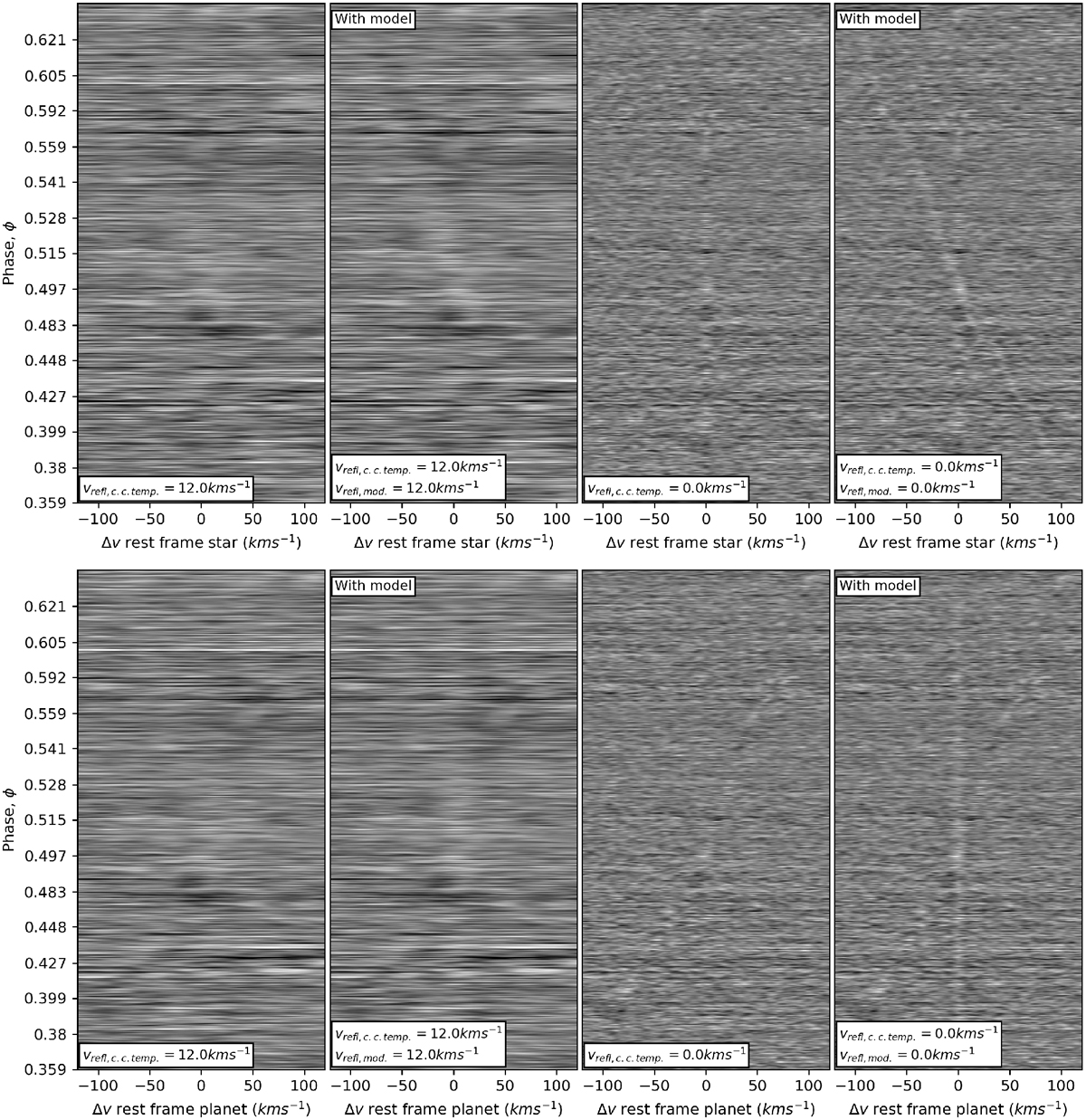Fig. 12

Download original image
All-nights CCF matrices for cases 1, 2, 3 and 4, with the CCFs from all eight nights ordered by phase. The top panels are in the rest frame of the star and the bottom panels are in the rest frame of the planet. The cases where the cross-correlation template is rotationally broadened (cases 1 and 2, vrefl, c.c. temp = 12.0 km s−1, left two columns) and is not broadened (cases 3 and 4, vrefl, c.c. temp = 0.0 km s−1, right two columns) are shown. Cases 2 and 4, where a model (mod) following that proposed by M15 (Rp = 1.9, Ag = 0.5) has been injected are indicated by ‘With model’. For case 2, the injected model returns a very weak trail, as the CCF peak is spread out over more Δv increments. For case 4, the injected model is clearly visible to the eye as a blue-shifting trail in the stellar rest frame and as a vertical stationary trail in the planet rest frame. The phase increments are not evenly spaced due to uneven phase coverage (see Fig. 2). The faint vertical trails at Δv = 0.0 km s−1 in the top panels is due to residual stellar lines. The stellar residuals are much more pronounced for cases 3 and 4, because the stellar residuals match with the non-broadened cross-correlation template.
Current usage metrics show cumulative count of Article Views (full-text article views including HTML views, PDF and ePub downloads, according to the available data) and Abstracts Views on Vision4Press platform.
Data correspond to usage on the plateform after 2015. The current usage metrics is available 48-96 hours after online publication and is updated daily on week days.
Initial download of the metrics may take a while.


